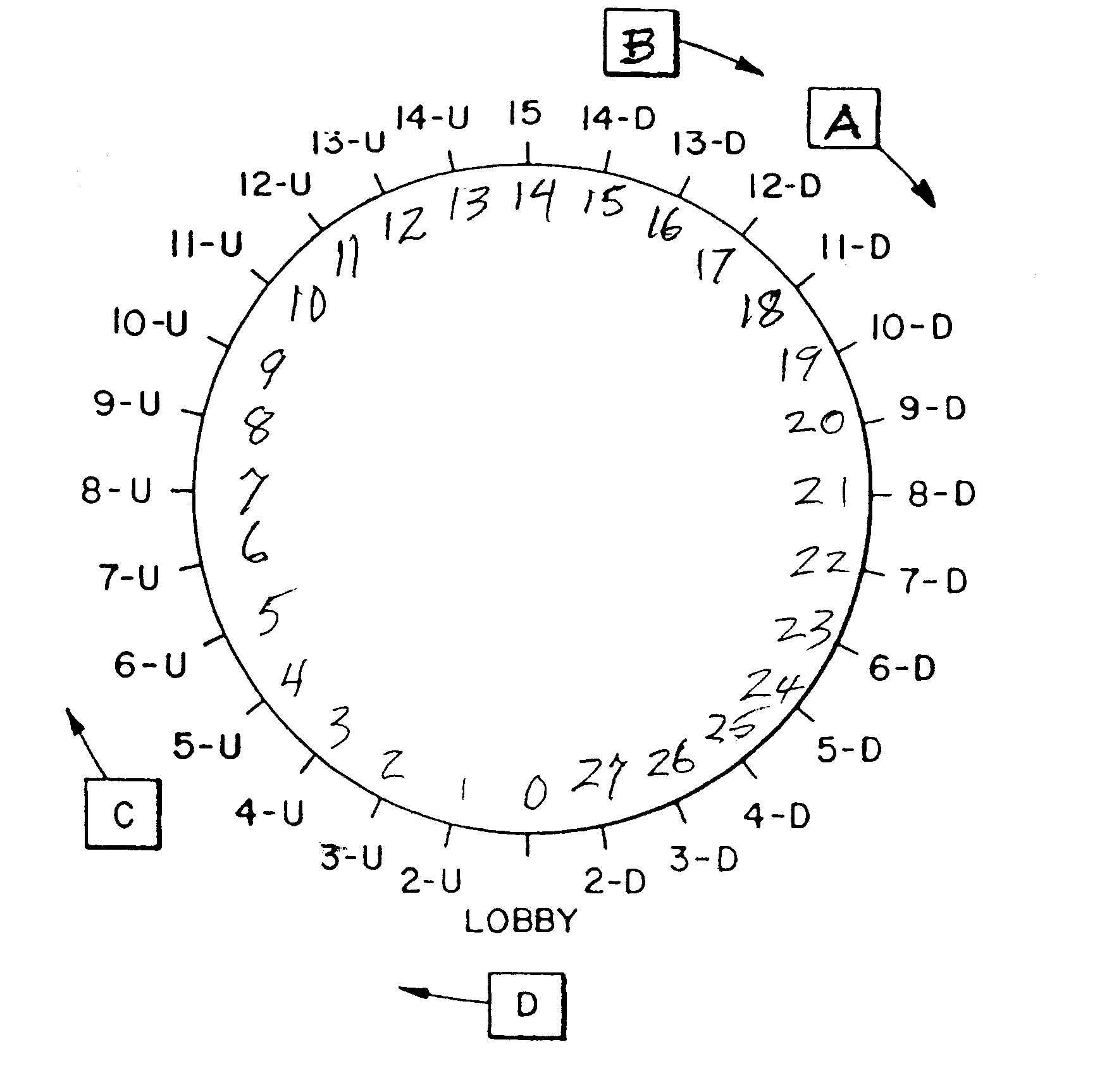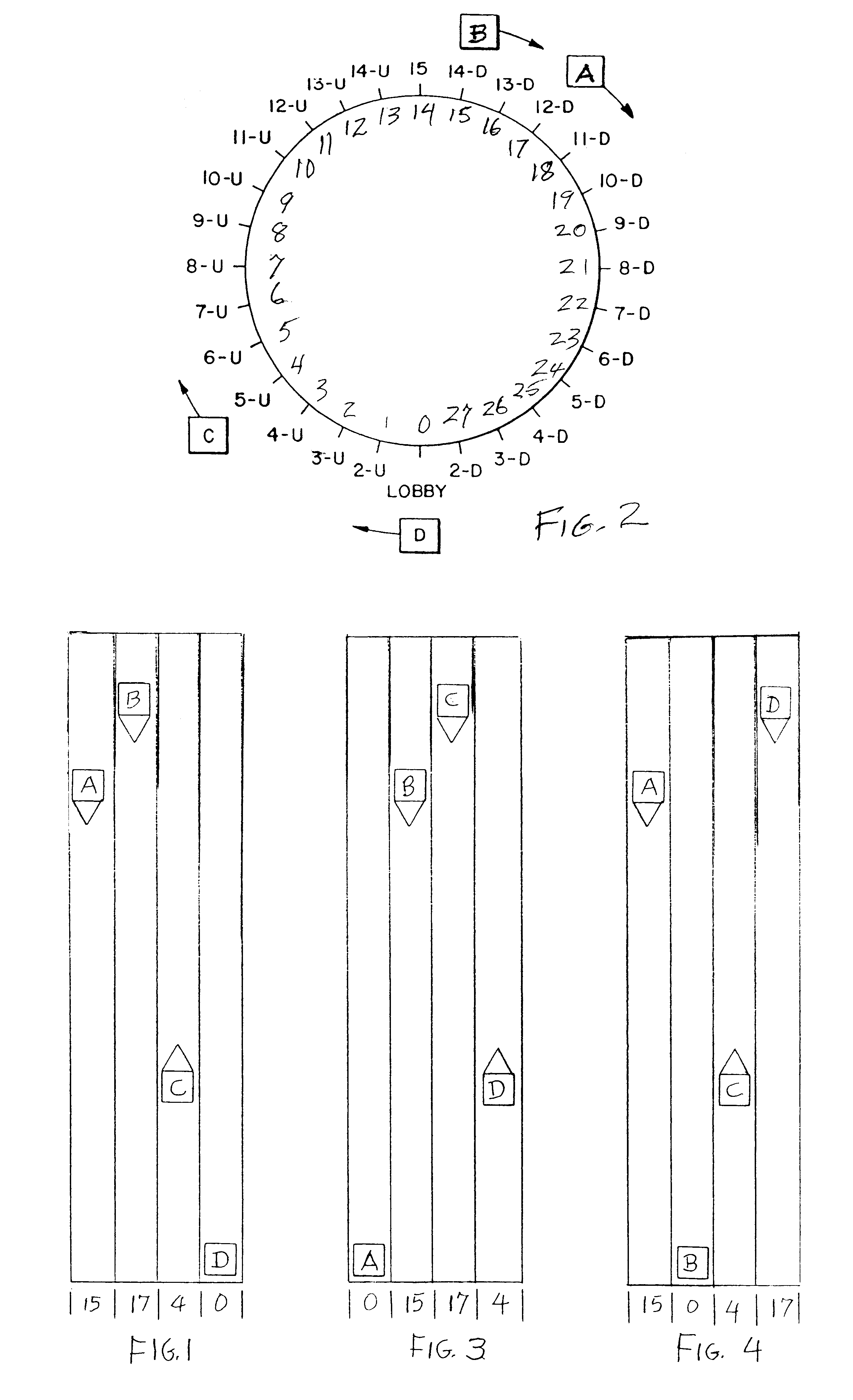Modifying elevator group behavior utilizing complexity theory
a technology of complexity theory and elevators, applied in elevators, transportation and packaging, etc., can solve the problems of complex system with variations in parameters and the complexity of the perturbation itself, and achieve the effect of reducing the bunching of elevator cars, and reducing the deterioration of passenger servi
- Summary
- Abstract
- Description
- Claims
- Application Information
AI Technical Summary
Benefits of technology
Problems solved by technology
Method used
Image
Examples
Embodiment Construction
The determination of the relationship between system complexity (entropy) and traffic rate is accomplished over a period of time, only once, or periodically (such as once a month or so) across the life of the elevator. After the threshold traffic rate has been determined, off-line, as described hereinafter, then during normal operation on a regularly recurring basis, such as every 200 milliseconds or so, the elevator system controller (such as the group controller, or other controller) will determine the current traffic rate, compare it with the established threshold value (such as 3.5 or 4.5 as described hereinafter in the example of FIG. 5) and adjust system operation by either adding or removing a swing car, increasing or decreasing maximum car acceleration, increasing or decreasing car rated speed, increasing or decreasing door dwell time, and other operational adjustments which can affect the effective traffic rate, that is, the traffic vs. traffic handling capability of the sy...
PUM
 Login to View More
Login to View More Abstract
Description
Claims
Application Information
 Login to View More
Login to View More - R&D
- Intellectual Property
- Life Sciences
- Materials
- Tech Scout
- Unparalleled Data Quality
- Higher Quality Content
- 60% Fewer Hallucinations
Browse by: Latest US Patents, China's latest patents, Technical Efficacy Thesaurus, Application Domain, Technology Topic, Popular Technical Reports.
© 2025 PatSnap. All rights reserved.Legal|Privacy policy|Modern Slavery Act Transparency Statement|Sitemap|About US| Contact US: help@patsnap.com



